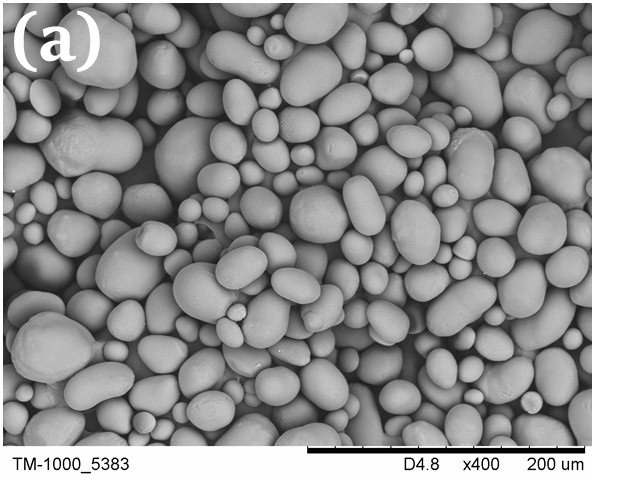
Chemical-mechanical treatment of potato starch for isolation of nanocrystal particles
Abstract
Keywords
Full Text:
PDFReferences
Yu L, Liu X, Petinakis E, Dean K, Bateman S. Starch-based Blends, Composites and Nanocomposites. Royal Soc Chem. 2015:439. doi:10.1007/978-3-642-20940-6_4
Chen G, Wei M, Chen J, Huang J, Dufresne A, Chang PR. Simultaneous reinforcing and toughening: New nanocomposites of waterborne polyurethane filled with low loading level of starch nanocrystals. Polym. 2008;49:1860–1870. doi:10.1016/j.polymer.2008.02.020
Garcıґa NL, Ribba L, Dufresne A, Aranguren M, Goyanes S. Effect of glycerol on the morphology of nanocomposites made from thermoplastic starch and starch nanocrystals. Carbohydr Polym. 2011;84:203–210. doi:10.1016/j.carbpol.2010.11.024
Han J, Zhao D, Li D, Wang X, Jin Z, Han KZ. Polymer-based nanomaterials and applications for vaccines and drugs. Polym. 2018;10:31. doi:10.3390/polym10010031
Gutjahr A, Phelip C., Coolen A-L, Monge C, Boisgard A-S, Paul S, Verrier B. Biodegradable polymeric nanoparticles-based vaccine adjuvants for lymph nodes targeting. Vaccines. 2016;4(4):34. doi:10.3390/vaccines4040034
Kreuter J. Nanoparticles as adjuvants for vaccines. Vaccine Des. 1995:463–472. doi:10.1007/978-1-4615-1823-5_19
Wilczewska A, Niemirowicz K, Markiewicz K, Car H. Nanoparticles as drug delivery systems. Pharmacol Rep. 2012;64(5):1020–1037. doi:10.1016/S1734-1140(12)70901-5
Le Corre D, Angellier-Coussy H. Preparation and application of starch nanoparticles for nanocomposites: A review. React Funct Polym. 2014;85:97–120. doi:10.1016/j.reactfunctpolym.2014.09.02
Nara S, Komiya T. Studies on the relationship between water‐satured state and crystallinity by the diffraction method for moistened potato starch. Starch‐Stärke. 1983;35(12):407–410. doi:10.1002/star.19830351202
Zhu F, Cui R. Comparison of physicochemical properties of oca (Oxalis tuberosa), potato, and maize starches. Int J Biol Macromol. 2020;148:601–607. doi:10.1016/j.ijbiomac.2020.01.028
Angellier H, Putaux J, Molina-Boisseau S, Dupeyre D, Dufresne A. Starch nanocrystals fillers in an acrylic polymer matrix. Macromol Symposia. 2005;221:95–104. doi:10.1002/MASY.200550310
Sujka M, Jamroz J. Starch granule porosity and its changes by means of amylolysis. Int Agrophys. 2007;21(1):107–113.
Angellier H, Choisnard L, Molina-Boisseau S, Ozil P, Dufresne A. Optimization of the preparation of aqueous suspensions of waxy maize starch nanocrystals using a response surface methodology. Biomacromol. 2004;5(4):1545–1551. doi:10.1021/bm049914u
Boldyrev VV, Bulens RM, Delmon B. The control of reactivity of solids. Elsevier Scientific Publishing Company: The Netherlands. 1979. 226 p. doi:10.1016/0032-5910(80)87021-5
DOI: https://doi.org/10.15826/chimtech.2022.9.3.13
Copyright (c) 2022 Denis E. Tryakhov, Anatoly A. Polytov

This work is licensed under a Creative Commons Attribution 4.0 International License.
Chimica Techno Acta, 2014–2025
eISSN 2411-1414
Copyright Notice






